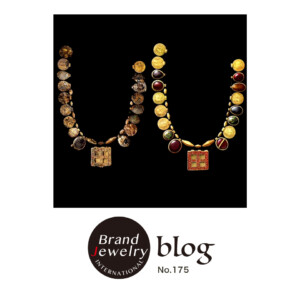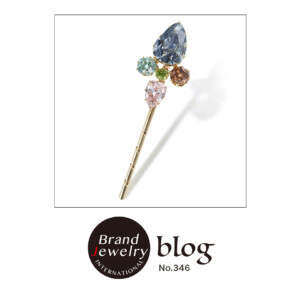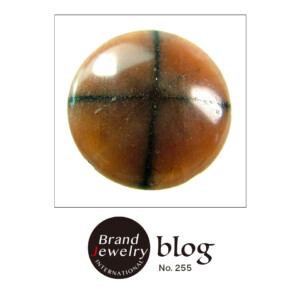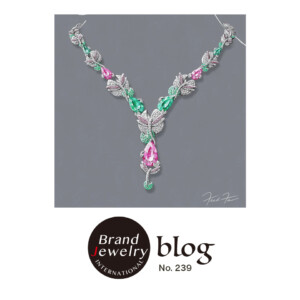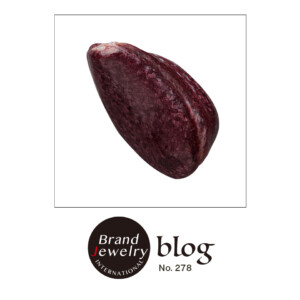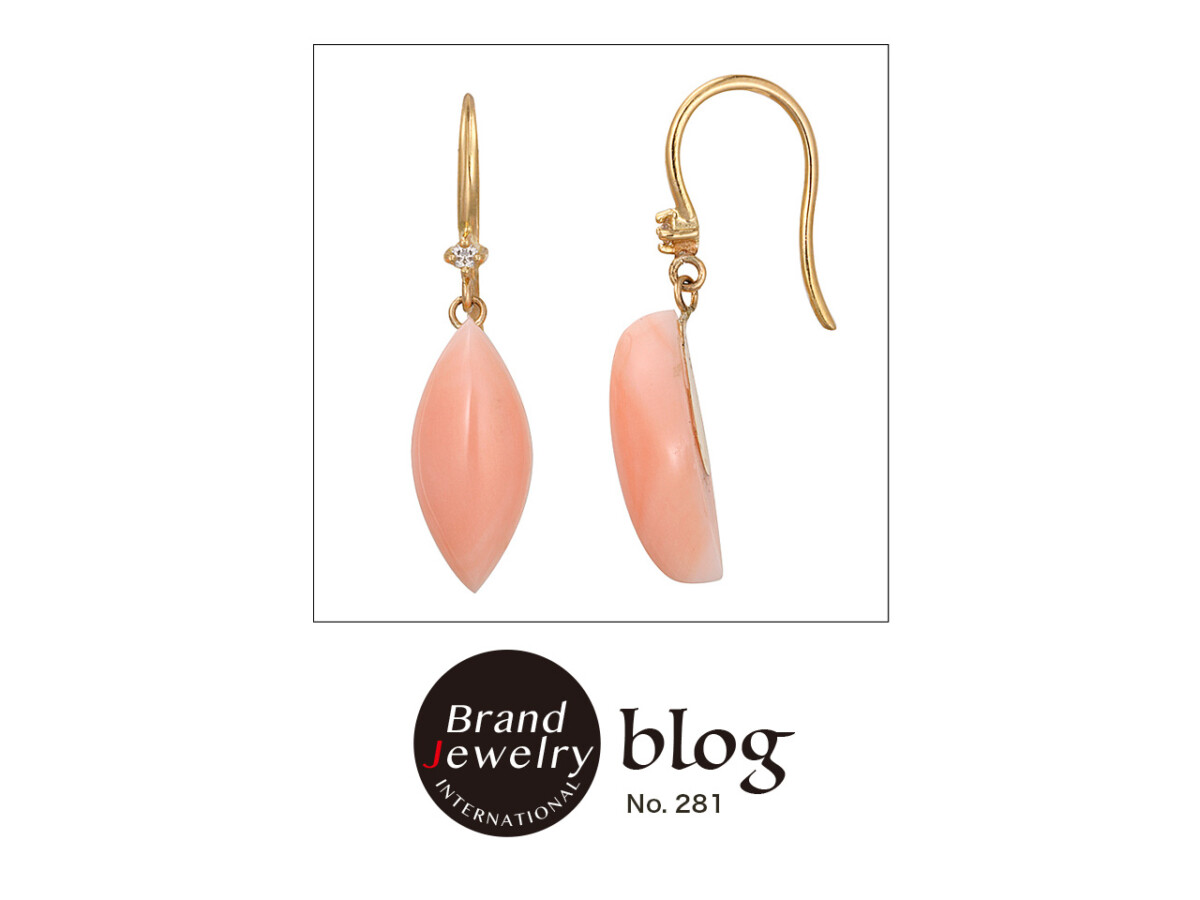
NO.281 3月の誕生石、サンゴ。肌なじみの良いマットなつや感。日本で産出される宝石珊瑚の魅力
Text=Brand Jewelry
English follows Japanese
3月の誕生石の1つ、サンゴ。サンゴは血赤が有名ですが、桃色、白、ベージュ、オレンジなど、ピンクトーンの柔らかな色があります。古くからお守りとして世界中で愛されてきました。結婚35周年は珊瑚婚です。
イタリアの宝石商も認めた日本の宝石珊瑚の品質
日本で3月の誕生石の1つに数えられるサンゴ。一般的にサンゴというと、沖縄など太陽の光が射し込む浅く暖かい海岸に生息し、サンゴ礁を形成しているといったイメージ。しかし、このサンゴは「造礁珊瑚」といって、宝飾品に使われる「宝石珊瑚」とは別物です。
宝石珊瑚の多くは太陽の光の届かない、冷たい深海でひっそりと生息しています。浅瀬の造礁珊瑚は1年で10センチと成長が早く、一方、宝石珊瑚は長い年月をかけてゆっくりと成長するといった違いがあります。
宝石珊瑚の歴史は古く、紀元前2万5千年前の旧石器時代からだとか。ドイツの遺跡から、当時のサンゴのビーズが発掘されていました。古代ローマでは、子供の健やかな成長を願ってゆりかごにつけたり、戦場へ向かう兵士が護符として身に着け、また、危険を回避し幸運をもたらす宝石として、航海や旅のお守りとして身に着けられていたと言います。地中海沿岸のイタリアやアルジェリアでは、約5,000年前にはすでに漁師たちによる珊瑚漁が行われていたそうです。
日本には、地中海からシルクロードを経て渡ってきたと伝えられ、現存する最古のサンゴとして奈良の正倉院の御物が挙げられます。江戸時代後期である1813年、日本でも高知県室戸岬や足摺岬周辺で発見されたという記述があります。
天保年間(1830〜1843年)には宝石珊瑚の採取網が考案されます。ただし土佐藩ではサンゴの所持や販売を禁止していたので、密漁という形で取引されていた可能性があります。
解禁となった明治時代には本格的な漁が行われるようになり、イタリアの商人が土佐の良質の桃色珊瑚や赤珊瑚を持ち帰ったことから、土佐のサンゴに注目が集まります。
高知のサンゴは、稀少価値が高い真っ赤な血赤珊瑚をはじめ、桃色珊瑚、白色珊瑚などがあり、同じ種類でも色のバリエーションが豊富な点も魅力です。加工技術も世界最高レベルと認められています。
今までサンゴと言えばオレンジピンクが好みでしたが、真っ赤が気になる今日この頃。世界に誇る高知の血赤珊瑚、いつか入手したいと思っています。
Coral is one of the birthstones for March. Coral is famous for its blood red color, but it also comes in soft pink tones such as peach, white, beige, and orange. It has been loved around the world as a good luck charm since ancient times. The 35th wedding anniversary is a coral wedding.
Coral is one of the birthstones of March in Japan. Generally speaking, coral is found on the warm, shallow coasts of Okinawa and other places where the sun shines and coral reefs are formed. However, this coral is called “reef-building coral,” which is different from the “jewelry coral” used for jewelry.
Most jewelry corals live quietly in deep, cold waters where sunlight does not reach. Reef-building corals in shallow waters grow as fast as 10 centimeters per year, while gemstone corals grow slowly over a long period.
Jewelry coral has a long history, dating back to the Paleolithic period, 25,000 years BC. Coral beads from that time have been excavated from archaeological sites in Germany. In ancient Rome, coral was worn on cradles to wish for the healthy growth of children, as a talisman for soldiers on their way to battle, as a jewel that averted danger and brought good luck and was worn as a talisman for navigation and travel. In Italy and Algeria along the Mediterranean coast, fishermen were already fishing for coral about 5,000 years ago.
It is said to have come to Japan via the Silk Road from the Mediterranean Sea, and the oldest extant coral is the Imperial Treasure in the Shosoin Repository in Nara. In 1813, in the late Edo period (1603-1868), there are descriptions of its discovery in Japan around Cape Muroto and Cape Ashizuri in Kochi Prefecture.
During the Tempo period (1830-1843), nets for collecting jewel coral were invented. However, the Tosa Clan prohibited the possession and sale of coral, so it is possible that it was traded in the form of poaching.
When the ban was lifted in the Meiji period(1868-1912), full-scale fishing began, and Italian merchants brought back high-quality peach and red coral from Tosa, attracting attention to Tosa’s coral.
Kochi coral includes the rare and highly valued bright red blood-red coral, peach coral, white coral, and other types of coral, and the same type of coral can be found in a wide variety of colors. The processing technology is also recognized as one of the best in the world.
———————————————————————————————————————
画像出展 : トップのピンクサンゴのピアス
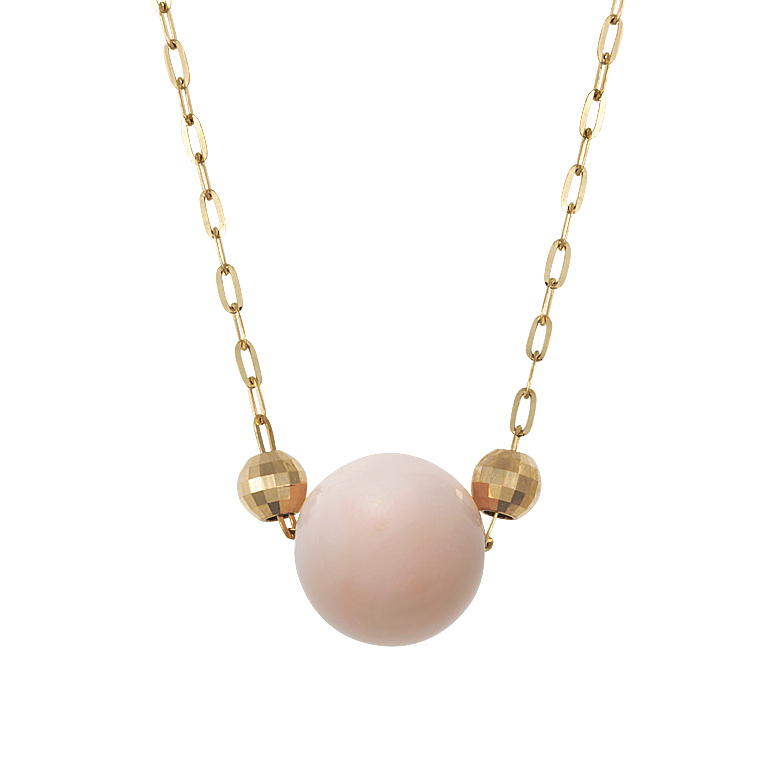
小さなピンクのサンゴのペンダント。優しい雰囲気のピンクの1粒のピンクサンゴに、ミラーボールカットのゴールドパーツがキラキラと輝きます。3月に誕生日を迎える人におすすめです。
オンラインショップはこちら。
メンバーの方には一足先にお得情報をお知らせします。会員登録はこちらから
https://brandjewelry.shop/usces-member/?usces_page=newmember

